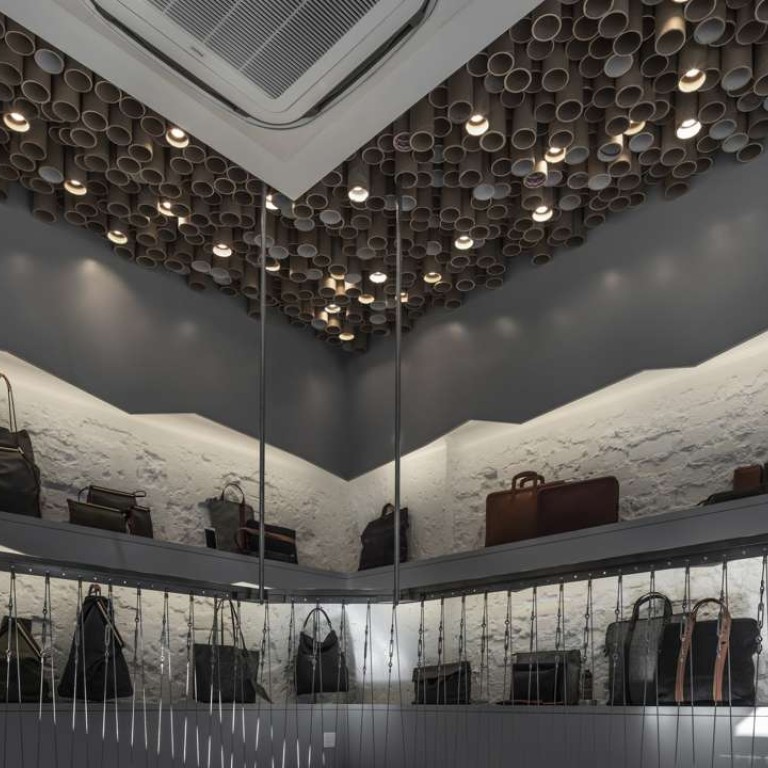
One man’s trash becomes treasure for HK’s new age designers
Architects are discovering that discarded materials can be used for crafting sustainable designs
In the urban jungle of Hong Kong, there exists a rare bower bird. Gene Miao can’t work beside a growing pile of thrown-away cardboard tubing, or drive past demolition debris on the sidewalk, without wanting to collect it. So he does, often without knowing quite what he will do with it.
One man’s trash, however, became another’s treasure in one of his recent projects: his fitout of handbag shop RO, in Gage Street, Central. Within RO’s footprint of just 200 square feet, Miao, chief designer at 1:1 Limited, created ceiling adornment and light fittings from cardboard inner tubing of industrial-grade plastic wrap, discarded by logistics companies sharing the Kowloon Bay industrial building where his office is situated.
The cardboard tubing was quite sturdy, and had an inner diameter of about 70 millimetres “which turned out to be the perfect fit to house MR16 LED light bulbs,” he said. “We cut the rolls into different lengths, used a rod to bunch them up together, then scattered LEDs randomly in the tubing to create a shimmering effect.”
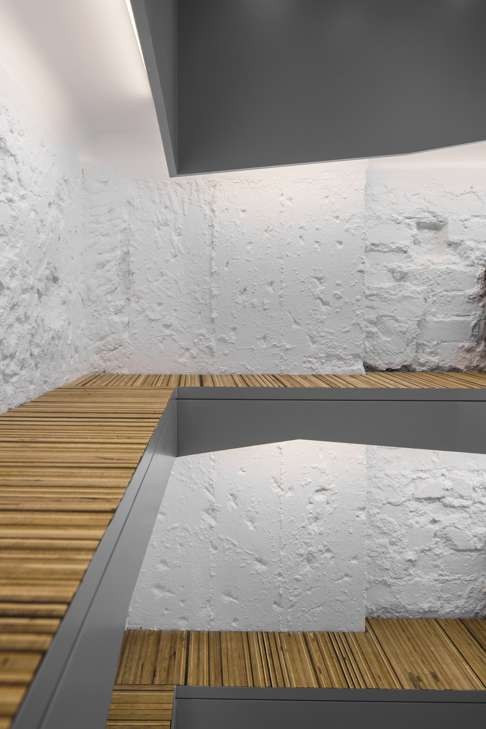
Wooden flooring rejected by the manufacturer, and given to Miao free, became a horizontal display surface for merchandise.
“Wood is an organic material, so there’s bound to be some colour variance,” he said. For this reason there is reject flooring in every interior project. Miao sandwiched together different kinds of wood, using the edge of the material instead of the top surface to create a striated pattern.
Galvanised metal used in the fitout came from some of the shop owner’s other retail premises, to reduce waste and avoid buying new.
Miao believes it is a designer’s role to suggest such options to clients. “It is not doing much in terms of helping landfills, but creates awareness about a new way of thinking,” he said. “It shows people … that not all materials need to be brand new.”
Hong Kong’s bower bird is not the last of his species. In Australia, Melbourne-based March Studio filled the lobby of a Canberra hotel, called Hotel Hotel, with off-cut timber and other scavenged materials. More than 5,000 timber pieces had been left over from the building’s construction, including formwork beams from the concrete casting. The project was completed in 2014 and won World Interior of the Year for 2015 at the INSIDE World Festival of Interiors, presented in Singapore last November.
Architect Rodney Eggleston, founding director of March Studio, said the building was intended to house a new department of climate change. Though that never eventuated owing to a change of government, the idea that the interior should be a comment on sustainability was retained. He asked the builder to stockpile the waste material, then built a 3D model based on the materials collected, rather than designing the interior and specifying materials for it. Extra materials were sourced from local wrecking yards, including the boards from a basketball court.
So the interior is a sculpture of repurposed, suspended timber, scattered across the walls and ceiling, filtering exterior light and views into the space. The stairs and handrails are also made from recycled timber.
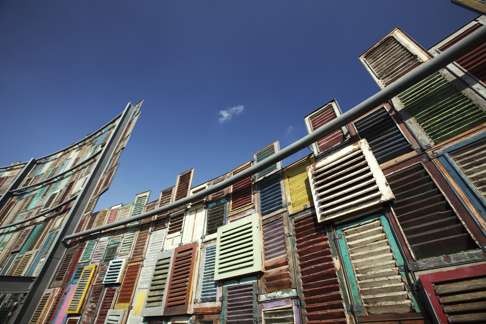
For the entrance to quirky Potato Head Beach Club in Seminyak, Bali, Indonesian architect Andra Matin stacked a towering patchwork of 10,000 mismatched, 18th-century teak window shutters. They had been found in abandoned houses and building sites across the archipelago by Ronald Akili and Jason Gunawan, founding partners of PTT Family, which owns Potato Head (the Hong Kong branch of the restaurant is in Sai Ying Pun).
“These beautiful vintage teak window shutters are still found on almost every island that makes up Indonesia,” Akili said. “They are great symbols of Indonesia’s distinct surroundings and the nation’s rich history. Inside, all the timbers and furniture are recycled.
“Most importantly, each of these vintage teak window shutters has a story and emotional connection,” he said.
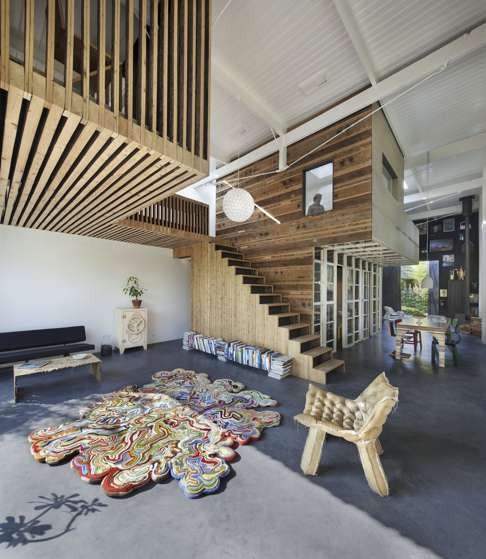
Bower bird designers elsewhere in the world include Dutch architect Rolf Bruggink, who, in collaboration with Niek Wagemans, used scrap from a demolished office building next door as the sole construction material used to transform a 19th-century coach house into his own home and studio, House of Rolf.
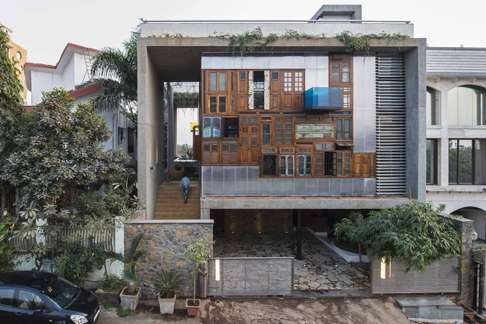
In Mumbai, local studio S+PS Architects gathered old doors and windows, antique wooden columns and metal drainpipes to craft the Collage House, a new home for an Indian family of four generations. And Chilean architect Alejandro Aravena used 90 tonnes of waste generated by the previous year’s Venice Art Biennale to create two introductory rooms for Venice Architecture Biennale 2016.
Meanwhile, Hong Kong’s Gene Miao, who has also made furniture from door jambs out of an old Kowloon Tong mansion, which he spied while passing a construction site, is now collecting tennis balls. “Do you know that (players) throw them away after only three sets?” he marvels. Miao cannot, at this stage, think of a purpose – but the pile is growing.

